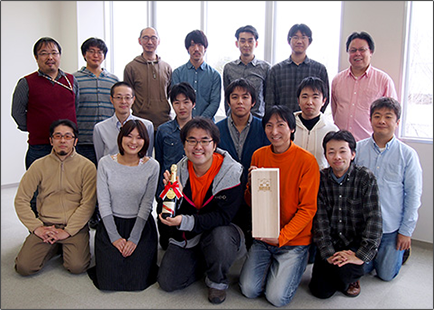- TOP
- CREATIVE
- Development Background
- Documentary! The “BOXBOY!” Project
Development Background
Documentary! The “BOXBOY!” Project

1.Accepting Game Proposal Entries!
At HAL Laboratory, anyone can pitch new ideas for games at any time and submissions are sought after especially in between projects. Mukae, entering his 7th year in the company as a game graphics designer, has suggested ideas for characters and gimmicks in the past but has never come up with an idea for an entire game. He decided to take this opportunity to come up with an idea for a game with a brand new character.
2.What Kind of Game Should it Be?
Mukae decided on a puzzle game. As he studied up on puzzle games old and new and by looking back on his own experiences playing them, his vision of what kind of game he wants to make began to take shape. He wanted to include action elements in addition to basic puzzle aspects, but keep the characters and stages fairly simple. All these ideas led to a game about a box-shaped character that solves puzzles using boxes.
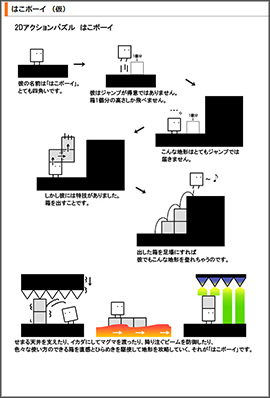
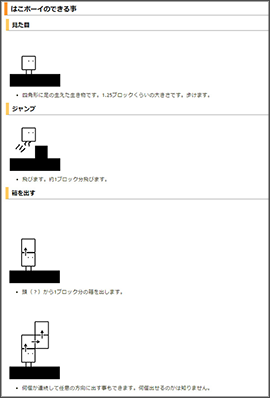
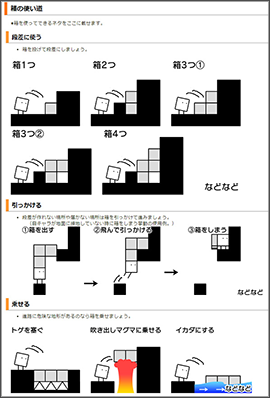
The proposal should convey the basics of how the game is meant to be enjoyed, as well as show gameplay and characteristics in a plain manner.
3.Let's Try Moving It!
Mukae showed the proposal to the programmer sitting next to him. He was very curious about what the veteran programmer had to say about it. To his surprise, the programmer wanted to try and make a prototype! He could not ask for anything more! The two got to work right away and completed a single stage prototype of the game in one week.
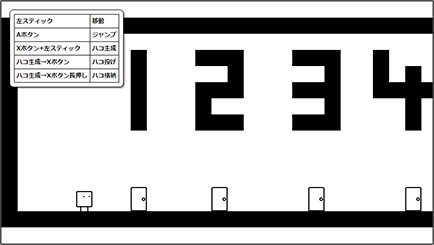
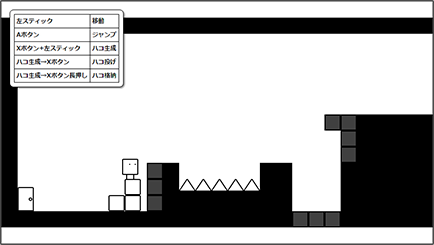
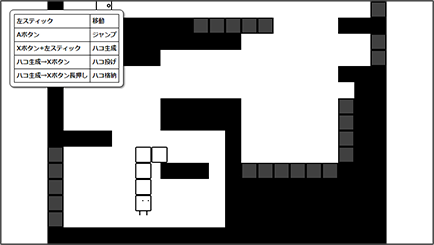
The prototype was used as a tool to see if the game was fun in the intended manner.
4.The Big Presentation
A few weeks after the submission, Mukae had his first presentation. Many questions were thrown at the nervous Mukae from the management team as he explained the selling points of the game.
“Why did you decide on a puzzle game?”
“This game has a very interesting world setting. What are you hoping to achieve with that?”
“How does the game unfold?”
The prototype gave Mukae a good grasp on how the game would play out, and he was able to answer the questions well. The presentation seemed to be a success! Could this mean...?
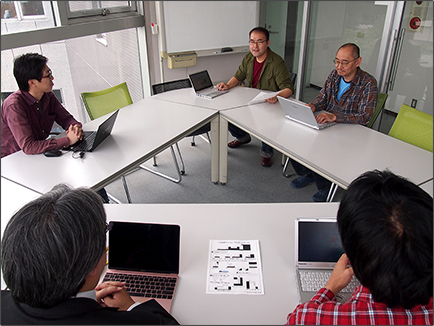
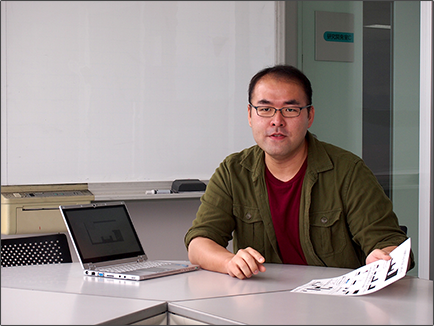
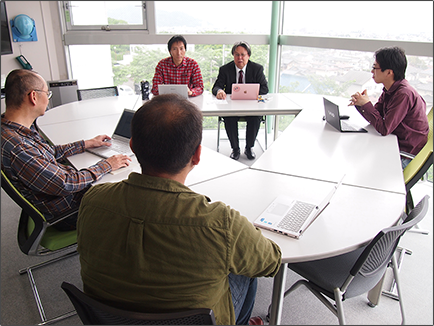
5.“Please Start This as an Experimental Project. ”
A few days after the good news, it was time to decide on the team members. At HAL Laboratory, the person that came up with the game idea takes on the role of the director, so Mukae naturally was assigned the position. The project manager, in charge of navigating the project to completion, was chosen followed by the graphics designer and programmer. The full team of 8 people was finally assembled and the experimental project was underway.
6.Let's Brainstorm!
Mukae explained the ideas and concepts of the game to the team members, and they all thought of various ways to realize these ideas from the perspective of their respective fields of expertise.
Many days passed mapping out ideas on the whiteboard, debating amongst each other, and coming up with even more new ideas.
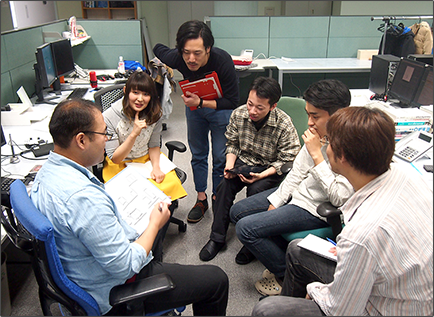
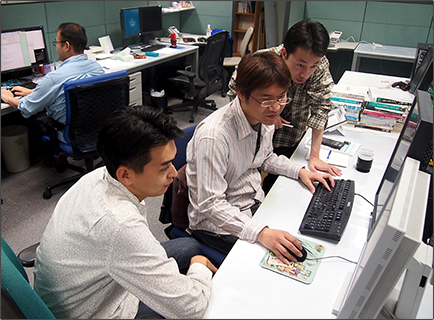
During meetings, everyone is expected to voice their ideas and opinions regardless of seniority or role in the project.
7.What is the Protagonist's Design?
In the game proposal, the protagonist “BOXBOY” was just a monochrome box with feet and eyes. Mukae insisted that the design was temporary but Itoh, who was in charge of character design, wanted to make use of the simplicity. It just needed a little more something. Many ideas were experimented with, such as making the lines thicker, adjusting the shape, adding color, etc. In the end, Itoh decided to place emphasis on the feet. Adding detailed animations to the feet (which consisted of just a few pixels), gave a distinctly comical uniqueness to the character. It was as if you could hear the sound effects as he performed various actions, such as trotting along, completing a cool pose, and grooving to the rhythm.
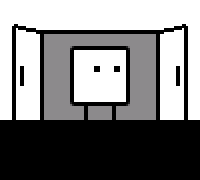
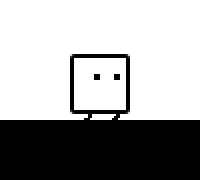
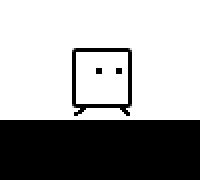
8.Going Down a Winding Path
With the basics of the game complete, Mukae went into the next presentation filled with confidence. However, the management team did not seem too enthusiastic...
Opinions such as, “Isn't the gameplay and graphics too simple?”, and “Why not try using color for a change?”, from the management team led to a complete reexamining of the game. The team looked over many aspects of the game from many angles, such as character and game settings and target audience. The team took some time making various prototypes, incorporating many different ideas.
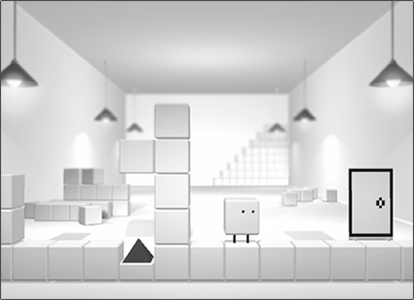
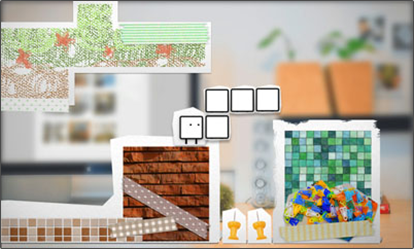
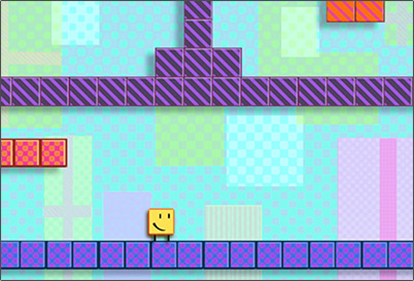
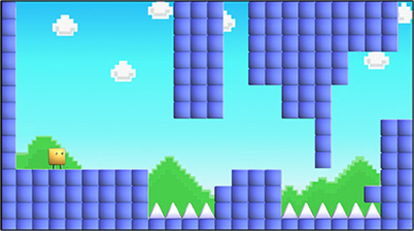
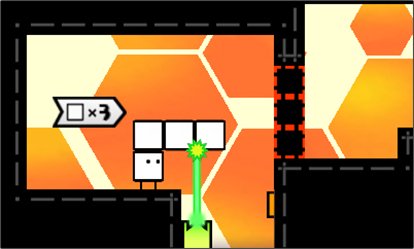
Many ideas were tested including 3D, colors, and collages.
9.All the Way Around and a Big Step forward!
After experimenting with many different prototypes, Mukae and the team were convinced that the game was best in monochrome with a simplistic taste. In the end, it was the same as the initial idea but this time, it held weight. It seemed roundabout but this conclusion was the result of approaching ideas from many different angles, with input from everyone on the team. The management team, who had been watching over the process, felt that the final decision from the team was well founded and immediately took the idea over to Nintendo, who is a business partner, and began negotiations for commercialization. Once the collaboration with Nintendo was finalized, the development team added more members and the project became official.
10.Making it Crystal Clear through Programming
There was one problem by making the game monochrome. When the character displayed on the game console is zoomed in, the lines appear thick and get blurry when there is movement. A bit of blur is not a problem when there is color but in a sharply contrasted monochromatic world, there is no hiding it. Utilizing 1:1 pixel mapping is the most effective way to clearly show lines no matter the circumstance, but it demands intricate and advanced technical skill to handle polygon models on the single-pixel scale. Despite the difficulty, Nozue was not willing to compromise and was able to implement it.
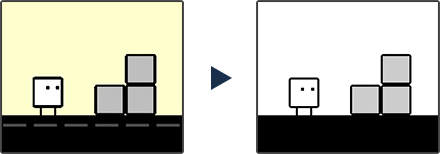
Using 1:1 pixel mapping, lines are clearly displayed no matter the circumstance!
11.Live? Digital? What is More Fitting for BOXBOY?
Live sounds were mainly used up to this point, but Mukae started to think that it was maybe not the best fit as the monochrome pixelated world took shape. He let Ishikawa, the audio creator, know about his concerns and that if the goal was to create a snappy, sharp world without any superfluousness, the sound should match that as well. Ishikawa tossed aside everything he had been working on up to this point and started over with a clean slate. After some trial and error, he was able to create a sound that was appropriate for BOXBOY; warm and memorable, while still reminiscent of a digital world.
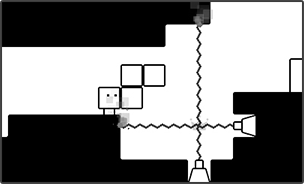
Listen to the sounds of Stage 1
Top:The original sound
Bottom:The adopted sound
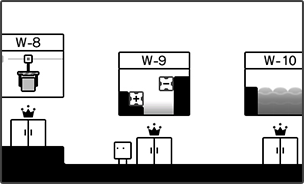
Listen to the sounds of the World Map
Top:The original sound
Bottom:The adopted sound
12.More Surprises! More Fun!
The basics of the game was complete, but Mukae wanted to add something that only this game could offer. When Mukae asked Ohta if the protagonist could have costumes, he started on the designs right away.
The goal was to give players a fun surprise that they could laugh about, even if the protagonist was limited to being just a box. Ohta came up with over 50 sketches, suggested 20 of them to the team, and 10 were picked for the final version.
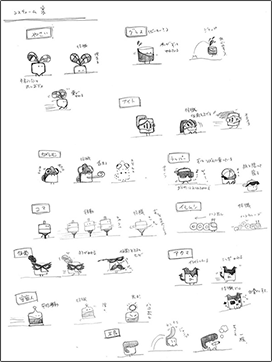
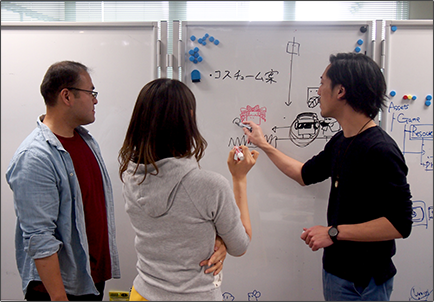
13.What Should the Title Be?
Various ideas for the game title were under consideration in tandem with the development, and many ideas were suggested by the team members as well as by the Brand Management Division who were in charge of promoting characters. The title is an important element that determines the impressions of the game and affects sales. After careful consideration by all those involved in the project, the initial idea for the title with an exclamation mark added was chosen; “BOXBOY!”
14.Last Minute Additions!
Development was nearing completion and the in-house QA team was hitting full stride with the debugging process, but Mukae was coming up with yet more ideas. He wanted something to give players reason to move on to the next stage. How about a brief story with various characters appearing in between the stages? He knew it would be difficult to add something like this so late into development, but after sharing this idea with the team, they were immediately on board. The team worked on this while also moving ahead with the debug process.
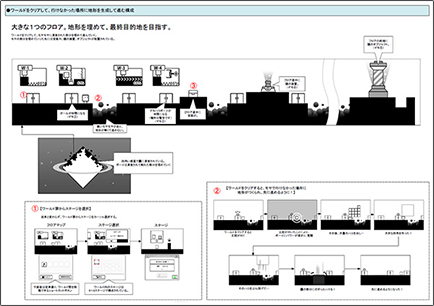
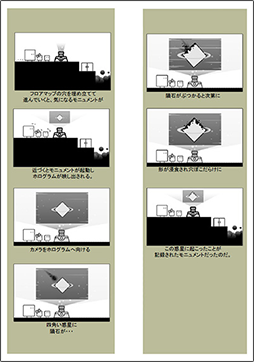
15.The Bigger the Hurdle, the Bigger the Joy
The story was implemented successfully and the team was now focused on fixing bugs! Programmers were especially busy, but was able to fix the bugs reported from the QA team steadily. And finally...
“It's complete!”
With the proud announcement from the project manager, the team members all stood up and gave a round of applause. Everybody was filled with a sense of accomplishment with huge smiles on their faces. Tonight will be a celebration!
16.I am “Qbby” from “BOXBOY!”
The production of the overseas edition started before the excitement from completing the game could wear off. The word “Hako (box)” had a bad connotation in some parts of the world so the overseas title became “BOXBOY!”, with “Qbby” as the protagonist's name in all versions. The texts and icons that show up in the menu screen and tutorial was also adjusted for the various languages and cultures. It was difficult to catch mistakes in foreign languages so the process was done very carefully.
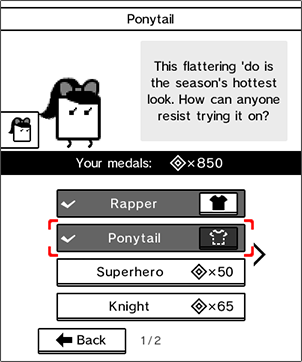
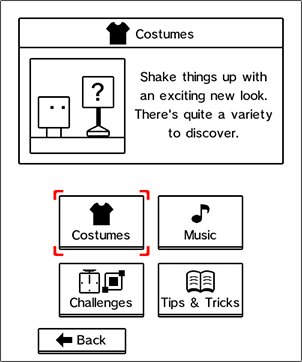
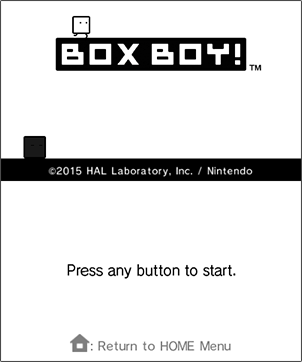
17.Becoming a More Loveable Character
Suddenly, a new request came from the production team to incorporate more of Qbby's charm into the game! Adding new design elements into the game after completion is an extremely rare case. The team brainstormed ideas about what could be added without risking new bugs appearing, when Nozue the programmer suggested adding more variations to the stage completion dances. Nozue had actually been preparing some extra variations already during development! Upon seeing Qbby's expressive stage completion dances, the production team gave it the green light right away and the team worked on implementing it immediately.
18.Onto the World Stage, “BOXBOY!”
January 14th, 2015, midnight. “BOXBOY!” was officially announced as a Nintendo 3DS digital game during the Nintendo Direct. The team members watched anxiously from their own homes to see how the viewers would react to the announcement.
Immediately after the broadcast was over and the date changed to the 15th, “BOXBOY!” went on sale. The official website was opened to the public at the same time and there were wonderful comments all over the internet. Success!!! The team members headed to bed, filled with a sense of joy and accomplishment. Tomorrow is another day of work, and the road to pursue great entertainment continues onwards!
